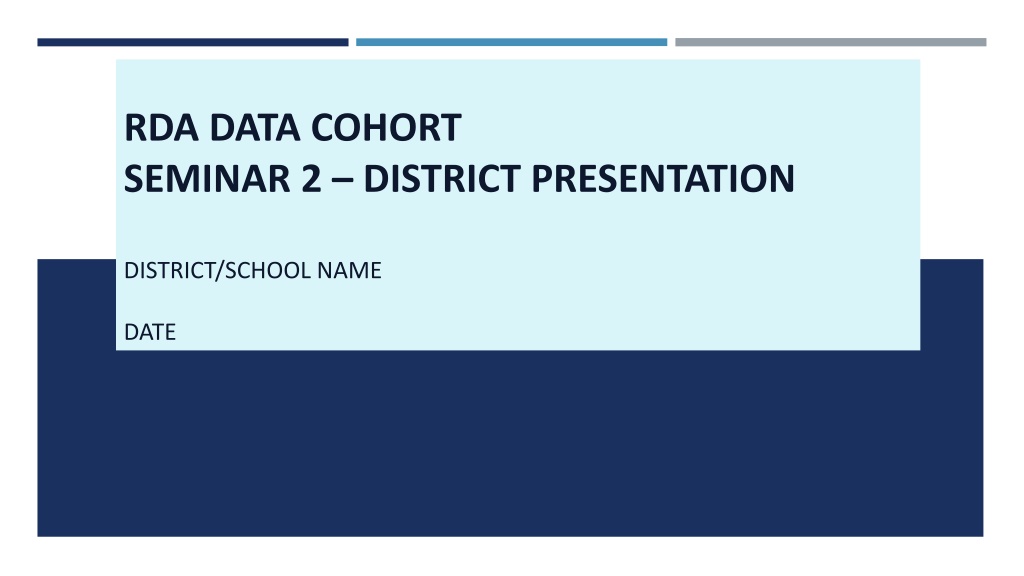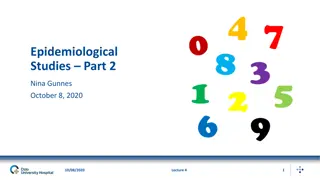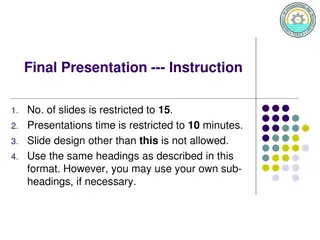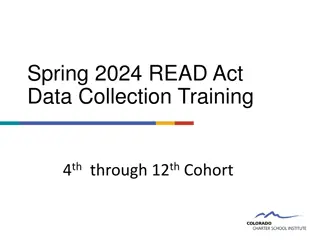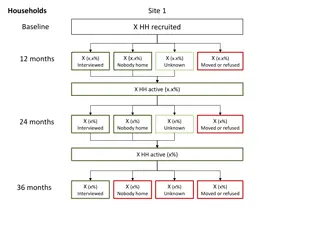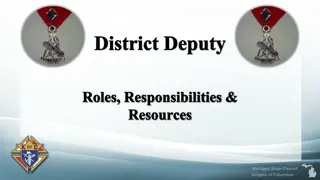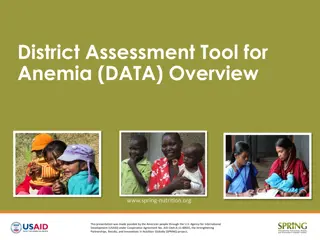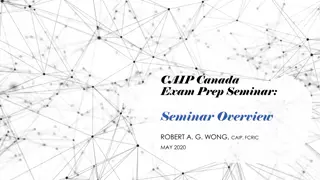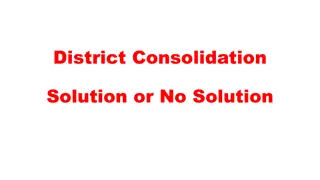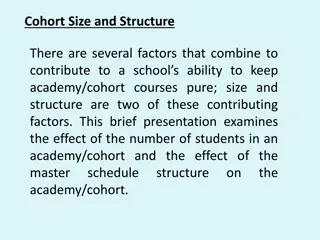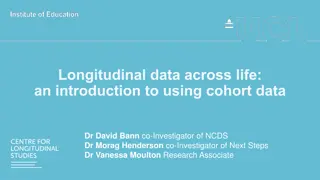Data Cohort Seminar District Presentation
This template outlines the structure for a district presentation based on data collected and analyzed in a seminar setting. It includes sections on problem statement, data collection, analysis results, root cause identification, and theory of action steps. The presentation emphasizes improving outcomes by addressing identified issues with strategic actions and clear goals.
Download Presentation

Please find below an Image/Link to download the presentation.
The content on the website is provided AS IS for your information and personal use only. It may not be sold, licensed, or shared on other websites without obtaining consent from the author. Download presentation by click this link. If you encounter any issues during the download, it is possible that the publisher has removed the file from their server.
E N D
Presentation Transcript
RDA DATA COHORT SEMINAR 2 DISTRICT PRESENTATION DISTRICT/SCHOOL NAME DATE
GENERAL NOTES PRESENTATION LENGTH - 10 15 MINUTES THIS TEMPLATE DOES NOT REPRESENT A SPECIFIC NUMBER OF SLIDES REQUIRED FOR YOUR PRESENTATION, BUT RATHER THE CONTENT TO BE COVERED. YOUR PRESENTATION MAY INCLUDE MORE SLIDES THAN WHAT IS CONTAINED IN THIS POWERPOINT TEMPLATE. THERE WILL BE A SHORT Q & A AFTER EACH PRESENTATION. PLEASE USE THE MICROPHONE WHEN AVAILABLE. PAST PARTICIPANTS HAVE FOUND MULTIPLE PRESENTERS, RATHER THAN A SINGLE PRESENTER, WORKS WELL. 2
PROBLEM STATEMENT Directions: Provide a summary of the problem statement as it has been refined through the collection and analysis of data. The problem statement defines the area in which we want improved results. The problem statement should reflect answers to: Who has the problem? What is the problem? Where did the problem occur? When did the problem occur? 3
DATA COLLECTED Directions: Report on data the team collected after Seminar 1. Report on the data collection activities conducted, such as interviews, surveys, and review of student data (discipline records, attendance, progress monitoring data, etc.). 4
RESULTS OF DATA ANALYSIS Directions: Report on the results of the data analysis conducted by the team along with anytrends and/or insights you discovered through the data collection and analysis process. Graphical displays of data can help your analysis and communication to your audience. 5
ROOT CAUSE STATEMENT Directions: Provide the root cause which was developed after the problem statement was formulated. Remember to complete the WHY activity to get to the root cause of the problem. 6
THEORY OF ACTION Directions: Provide theory of action steps based on your root cause. A Theory of Action is an if, then statement that demonstrates a causal relationship between the action and the intended outcome. A Theory of Action connects the goals and objectives to specific strategies and outcome measures. The Theory of Action on the next page is provided as an example. You can use the Theory of Action you used in your planning with this presentation. 7
THEORY OF ACTION If we... Then... Resulting in... 8
LOGIC MODEL Directions: Provide a Logic Model which was developed after and based on your Theory of Action. The Logic Model defines a specific process of change to achieve the specified outcomes. The Logic Model on the next page is provided as an example. You can use the Logic Model you used in your planning with this presentation. 9
Logic Model PROBLEM STATEMENT: GOAL(S): RESOURCES What resources do we have to work with? ACTIVITIES OUTPUTS SHORT-TERM OUTCOMES INTERMEDIATEOUTC OMES LONG-TERM OUTCOMES What will happen? What are the tangible products of the activities? What changes do we expect to occur within the short term? What changes do we want to see occur after that? What changes do we hope to see over time? 10
IMPLEMENTATION PLAN Directions: Provide the initial development of the Implementation plan. You will have time to refine and continue to develop your implementation plan during Seminar 2. Highlight key features of your implementation plan and be able to talk about how it fully implements your logic model. Be sure to detail how you will measure that you are implementing well, and your plan for sustainability. The Implementation Plan on the next page is provided as an example. You can use the Implementation Plan you have developed in this presentation. 11
Implementation Plan Effort Quantity (Activities and Output) Person(s) Responsible Date of Completion Effort Quality Evidence of Effective Implementation - Evaluation that the next level of improvement/system layer is engaged by the quality effort Evidence of Results - Evaluation that the next level of improvement/syst em layer is engaging well in the quality effort Results Indicator - Effect Quality Target Evaluation SMART Goal Summary District gives training to teachers How will the District measure that it delivered the training well? How will the District know participants are using the training? How will the District know that teachers are using the training effectively? How do we measure impact? 12
REFLECTIONS ON THE RDA PROCESS Directions: Share some of your team s successes and challenges while working through the development of a problem statement, the collection and analysis of data, and the various steps in the creation of an implementation plan. 13
